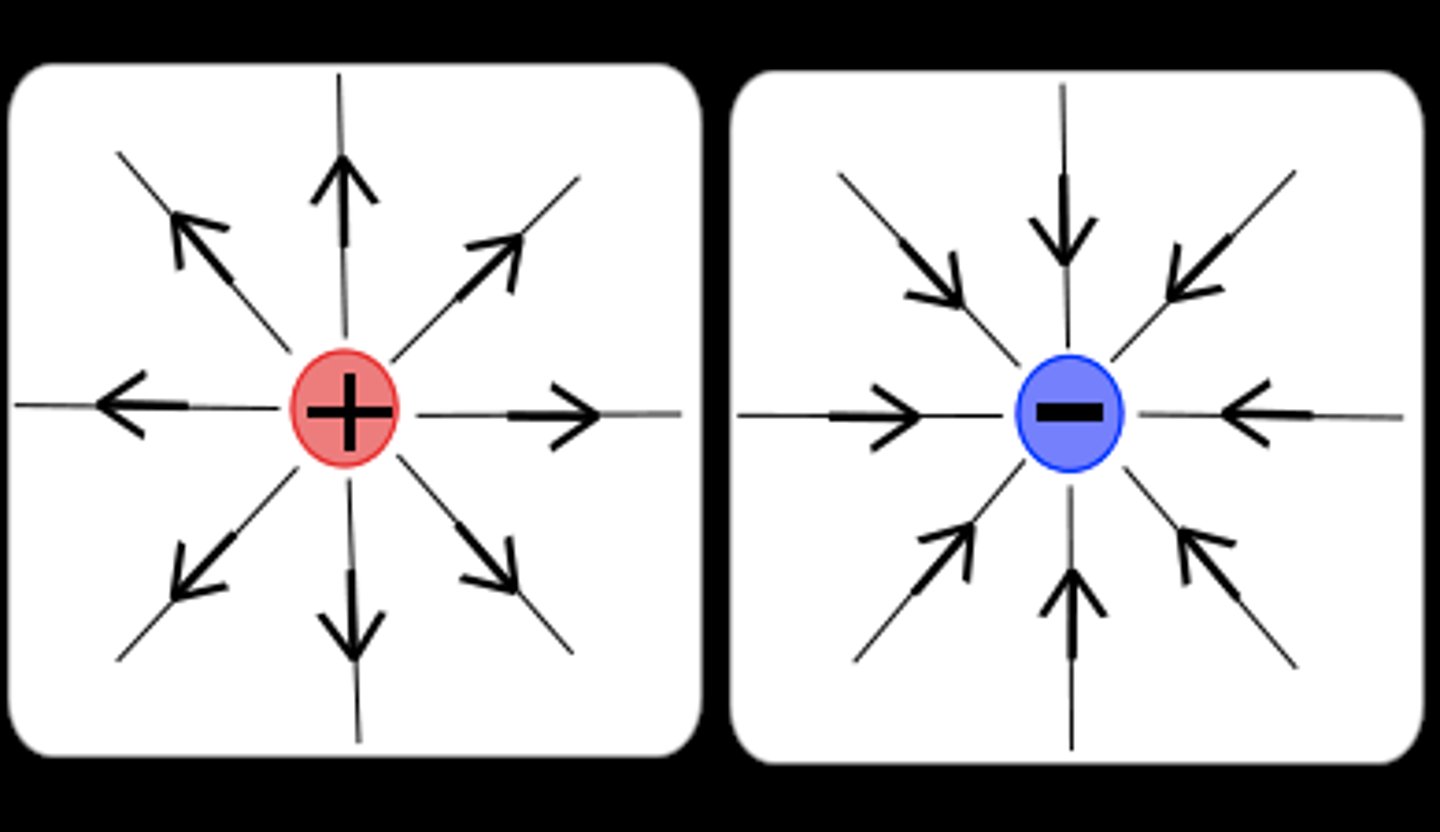AQA Physics paper 1
1/219
There's no tags or description
Looks like no tags are added yet.
Name | Mastery | Learn | Test | Matching | Spaced |
|---|
No study sessions yet.
220 Terms
Energy is transferred between stores
Thermal, kinetic, gravitational potential, elastic potential, chemical, magnetic, electrostatic, nuclear
Energy is transferred...
Mechanically (by a force doing work), electrically (work done by moving charges), by heating or by radiation (like light or sound)
When a system changes, energy is transferred
It can be transferred into or away from the system, between objects in the system or between different types of energy stores. Closed systems are where neither matter nor energy can enter or leave. The net change in the total energy of a closed system is always 0
kinetic energy
energy of motion - the greater an object's mass and the faster it is going, the more energy there will be in its kinetic energy store. Ek (j) = 1/2m(kg)v(m/s) squared
Raised objects store energy in gravitational potential energy stores
lifting an object in a gravitational field requires work, causing an energy transfer to the the GPE store of the object. Ep(j) = m(kg)g(n/kg)h(m)
Falling objects transfer energy
Falling objects transfer energy from its GPE store to its kinetic energy store. When there's no air resistance, energy lost from the GPE store = energy gained in the kinetic energy store
Stretching transfers energy to elastic potential energy stores
As long as the limit of proportionality has not been exceeded, Ee (j) = 1/2 k (N/m) e (m) squared
specific heat capacity
the energy required to raise the temperature of one gram of a substance by one degree Celsius. 🔼E (j) = m(kg) c(j/kgdegree) 🔼theta (degrees Celsius)
Conservation of energy principle
Energy can be transferred but can never be created of destroyed
Dissipated energy
energy used up in a system, typically lost due to work done by friction, 'wasted energy'
Phone energy
When you use the phone, energy is usefully transferred from the chemical energy store of the battery in the phone, but some of this energy is dissipated to thermal energy
Closed system energy transfer
A cold spoon is dropped into hot soup in an insulated flask, which is then sealed. Energy is transferred from the thermal energy store of the soup to the useless thermal energy of the spoon
Power
The rate at which work is done (watts). P(w) = E(j) / t(s)
Powerful machine
One which transfers a lot of energy in a short space of time
Conduction occurs mainly in solids
Conduction is the process where vibrating particles transfer energy to neighbouring particles.
Long definition of conduction
Energy transferred to an object by heating is transferred to the thermal store, which is shared across the kinetic store of the particles. The particles' collisions cause energy to be transferred between particles kinetic energy stores.
thermal conductivity
the Mrs sure of the rate at which thermal energy can travel through a material
Convection occurs only in liquids and gases
Convection is where energetic particles move away from hotter to cooler regions
Convection longer definition
Unlike in solids, the particles in liquids and gases are able to move. When you heat a region of a gas/liquid, the particles move faster and the space between particles increases. This causes the density of the region to decrease. Because they can flow, the warmer and less dense region will rise above denser cooler regions. If there is a constant heat source, a convection current will be made
Radiators - convection currents
Energy is transferred from the radiator to nearby air particles by conduction. The air by the radiator becomes warmer and less dense. This warm air rises and is replaced by cooler air. At the same time, the previously heated air transfers energy to the surrounding and cools, becomes denser, and sinks. This cycle repeats and causes a flow of air to circulate around the room
How to reduce unwanted energy transfers
Lubrication and thermal insulation
Lubrication reduces frictional forces
When something moves, there's at least one frictional force acting on it, causing some energy to be dissipated. For objects that are rubbed together, lubricants reduce the fiction between the object's surfaces when moved. Lubricants tend to be liquids (like oil) to flow easily between objects and coat them
Insulation reduces the rate of energy transfer by heating
Things to do to prevent energy loss through heating...
- have think walls made from low thermal conductivity material. This makes the rate of energy transfer slower, so the building will cool more slowly.
- use thermal insulation
Thermal insulation examples
- cavity walls made of an inner and outer wall with an air gap in between to reduce the amount of energy transferred by conduction.
- loft insulation can reduce convection currents created in lofts
- double glazed windows have an air gap between two layers of glass to prevent energy transfer by conduction
- draught excluders around doors and windows reduce energy transfers by convection
Most energy transfers involve some waste energy
Efficiency = useful output energy transfer / total input energy transfer OR efficiency = useful power output / total power input
Non renewable energy resources will one day run out
Fossil fuels and nuclear fuels. Fossil fuels are typically burnt to provide coal, oil, and natural gas. They damage the environment but provide most of our energy
Renewable energy resources will never run out
These are: the sun, wind, water waves, hydro-electricity, bio-fuel, tides, geothermal. Most of them do damage to the environment, but in less nasty ways than non renewables. However, they don't provide much energy and some are unreliable as they depend on the weather
Energy resources can be used for transport
Non renewable - petrol and diesel powered vehicles use fuel from oil. Coal can be used in old fashioned steam trains to boil water for steam.
Renewable - vehicles running on bio-fuels or a mix of a bio-fuel and petrol/diesel.
Electricity sometimes powers vehicles and can be generated using renewable or non renewable resources
Energy resources can also be used for heating
Non renewable - natural gas is widely used for heating homes. The gas heats water, which gets pumped into radiators. Coal is commonly burnt in fireplaces. Electric heaters use electricity generated from non renewable resources.
Renewable - a geothermal heat pump uses geothermal energy resources to heat buildings. Solar water heaters use to the sun to heat water, which gets pumped into radiators.
Wind power
This involves putting up lots of wind turbines in an exposed place, like on coasts. The turbines have a generator inside them - the rotating blades turn the generator to produce electricity.
wind power advantages
There's limited pollution (only when they're first manufactured), no fuel costs and minimal running costs, no permanent damage to the landscape
wind power disadvantages
They spoil the view, very noisy, unreliable as they depend on the weather, initial costs are quite high
Solar cells
They generate electric currents from the sun. They are often the best energy source to charge calculator or watch batteries, as they don't use much electricity.
solar power advantages
There's no pollution (although they use a lot of energy to manufacture), reliable in sunny countries in the daytime, energy is free and running cost extremely low
solar power disadvantages
Unreliable because they depend on weather, can't increase power output when there is extra demand, initial costs are high school
Geothermal power
This is energy in underground thermal energy stores. It is possible in volcanic areas or where hot rocks lie close to the surface. The source of a lot of this energy is the slow decay of various radioactive elements deep inside the earth
Geothermal power advantages
Free energy that is reliable and does very little damage to the environment. Can be used to generate electricity or heat buildings
Geothermal power disadvantages
There aren't many suitable locations for power plants, and the cost of building a power plant is high compared to the amount of energy that it produces
hydroelectric power used falling water
It tends to require the flooding of a valley by building a dam. Water is allowed out through turbines
Hydro-electric power advantages
There is no pollution and it can provide an immediate response to an increased demand for electricity. It is reliable and there are no fuel costs and minimal running costs
Hydro-electric power disadvantages
There is a big environmental impact from the valley flooding (rotting vegetation releases methane and CO2) and loss of habitat for some species. Initial costs are high
Water power
Lots of small wave-powered turbines around the coast. The moving turbines are connected to a generator
Water power advantages
There is no pollution, no fuel costs and minimal running costs. Can be useful on small islands
Water power disadvantages
It disturbs the seabed and the marine animals' haibitats. Spoils the view, hazard to boats, fairly unreliable, initial costs are high
Tidal barrages
Tidal barrages are big dams across river estuaries, with turbines in them. As the tide comes in the estuary gets filled up. The water is then allowed out through turbines at a controlled speed. Tides are produced by the gravitational pull of the moon and sun
Tidal barrages advantages
There is no pollution, pretty reliable as they always happen twice a day, no fuel floats and minimal running costs
Tidal barrages disadvantages
It prevents free access for boats. Spoils the view, and alters habitat, the height of the tide is variable, initial costs are moderately high
Bio-fuels
These are renewable energy resources created from plant products or animal dung. They can be solid, liquid, or gas and can be burnt to produce electricity or run cars in a similar way to fossil fuels
Biofuel advantages
They are fairly reliable as crops take a relatively short time to grow and some crops can grow all year round.
Biofuel disadvantages
They can't respond to immediate energy demands - to combat this, biofuels are continuously produces and stored. The cost to refine them is very high. Sometimes large areas of forest have been cleared for room to grow bio-fuels, resulting in species losing their natural habitats. The decay and burning of this vegetation increases CO2 and Meghan emissions
Non-renewable resources are reliable
There is enough fossil and nuclear fuels to meet current demand, and are extracted from the earth fast enough that power plants always have fuel, meaning they can respond quickly to demand. However, they are slowly running out. While the set up costs of power plants is high, the running costs aren't expensive.
nonrenewable resources create environmental problems
Coal, oil, and gas release CO2 when burned which adds to the greenhouse effect and contributes to global warming. Burning coal and oil release sulfur dioxide, leading to acid rain. Power plants spoil view. Oil spillage cause serious environmental problems, affecting animals.
Currently we still depend on fossil fuels
In the 20th century, The electricity use of the uk massively increased as the population grew. Since the start of the 21st century, it is slowly decreasing as we get better at being more efficient and careful. Most of our electricity is produced using fossil fuels. We are trying to increase our use of renewable energy resources. This move to renewable energy has been triggered by...
People want to use more renewable energy resources
We went to do less harm to the environment as we are aware of the consequences. We are aware non renewables will one day run out. Car companies have been affected by this change in attitude. Electric cared and hybrids are already being sold and their popularity is growing
The use of renewables is limited by reliability, money, and politics
Although scientists can advise, they don't have the power to make people change their behaviour. Building renewable power plants is expensive and so some energy providers are reluctant to do this. They might not be reliable , meaning more research would have to be done. Making personal changes can be expensive - hybrid cars are expensive as are solar panels
Charge flow =
Current x time
What is current
The flow of electric charge (amps)
What is resistance
Any thing that slows the flow down
What is pd (or voltage)
The driving force behind the charge
Potential difference =
Current x resistance
What measures current
An ammeter put in series
What measures pd
A voltmeter put in parralell
What does an ohmic conductor have
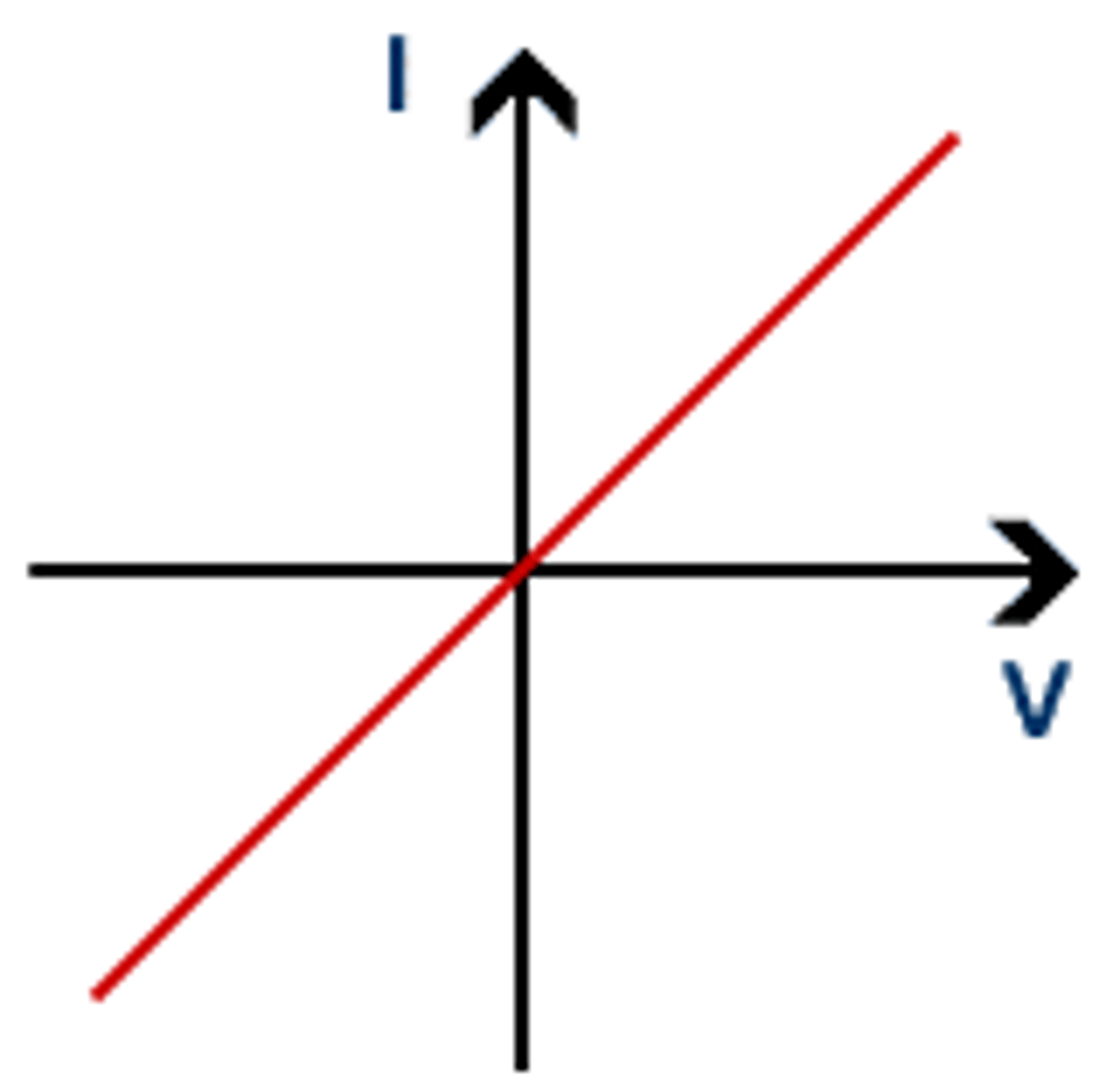
What does a phillament lamp IV characteristic graph look like
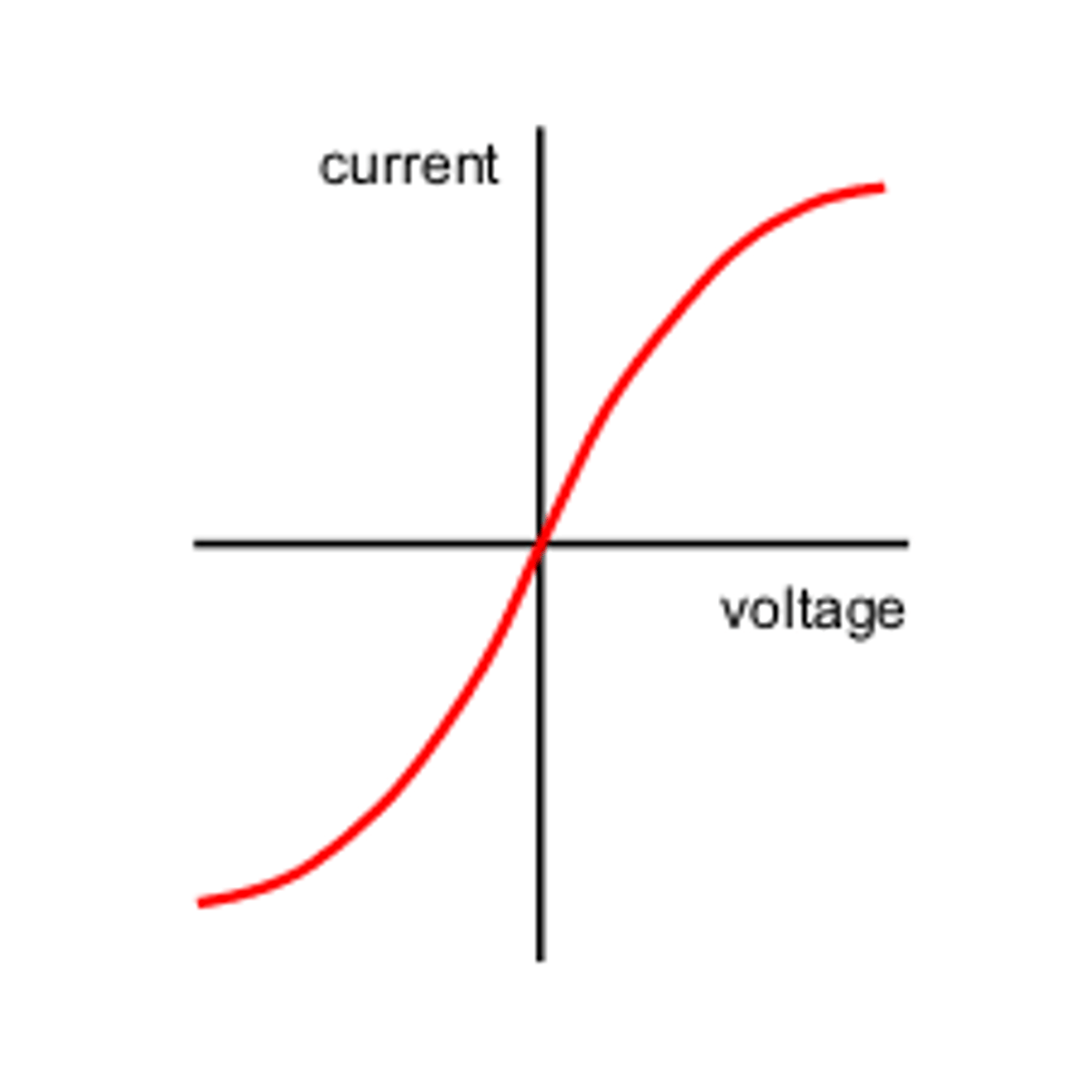
What does a diode IV characteristic graph look like
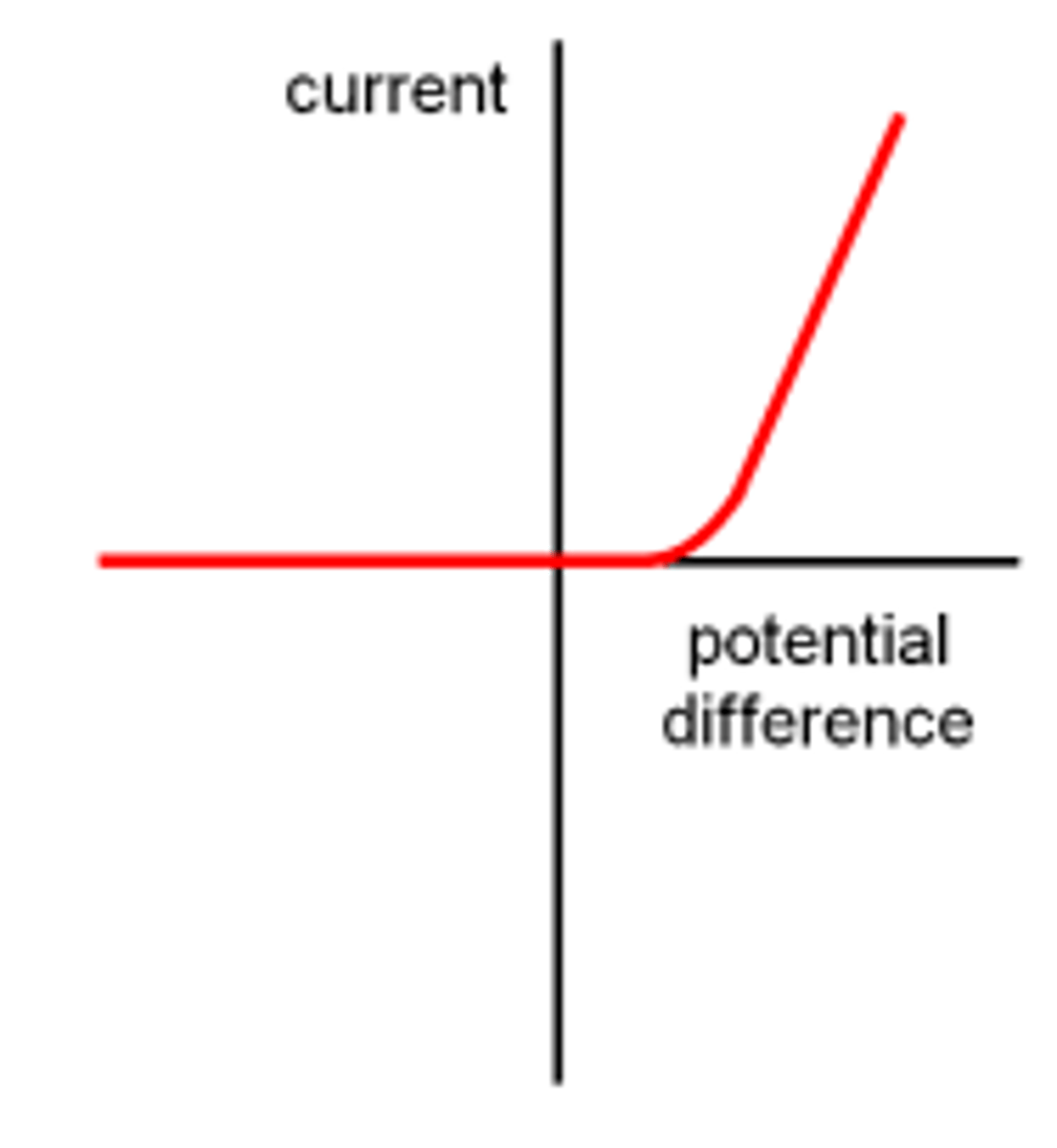
When is resistance highest in LDRs
Dark places
When is resistance highest in Thermistors
In cold
What happens to potential difference in a series circuit
Is is shared
V=v1+v2 etc
What happens to current in a series circuit
It is the same
What happens to resistance in a series circuit
Resistance adds up
What happens to potential difference in parallel circuits
It is the same
What happens to current in a parralell circuit
It is shared
What happens to resistors in a parralell circuit
It reduces the total resistance
total resistance of 2 resistors is less than the smallest individual resistor
What is mains supply
Ac (p+n ends alternate) 230v, 50hz
What is the blue wire
Neutral
What is the red wire
Live, provides ac
What is the green and yellow wire
Earth wire
When charge flows in a circuit...
... work is done
Energy transferred =
Power x time
Charge flow (c) x PD
Power=
Pd x Current
Current^2 x resistance
J/time
National grid uses
High PD low current so less energy lost to surroundings. This is charged by step up and step down transformers
What is the national grid
System of cables and transformers that cover the uk and connects power stations to consumers
What is battery supply
Dc
Build up of static is caused by
Friction, negative electrons are scraped off
What does too much static cause
Sparks.
High PD -> strong electrical field -> electrons to be removed -> current flows through air -> spark
Electric field lines go
From positive to negative
Charged objects in an electric field
Feel a force
What does a diode look like?
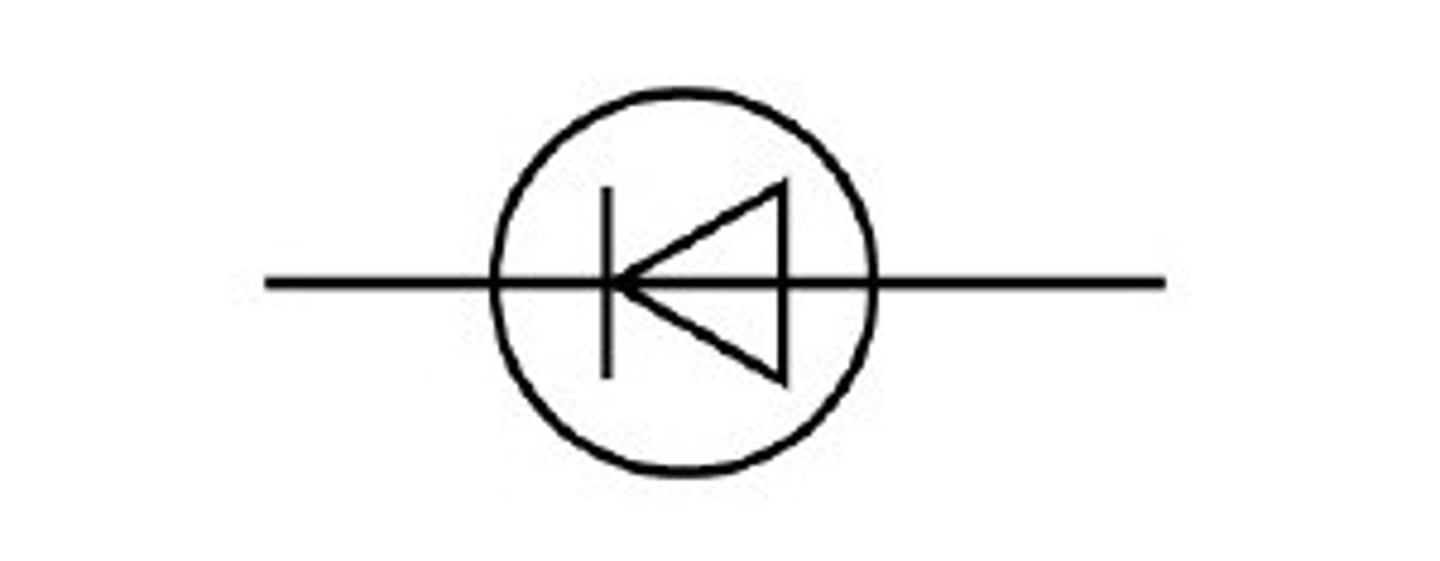
What does a resistor look like?
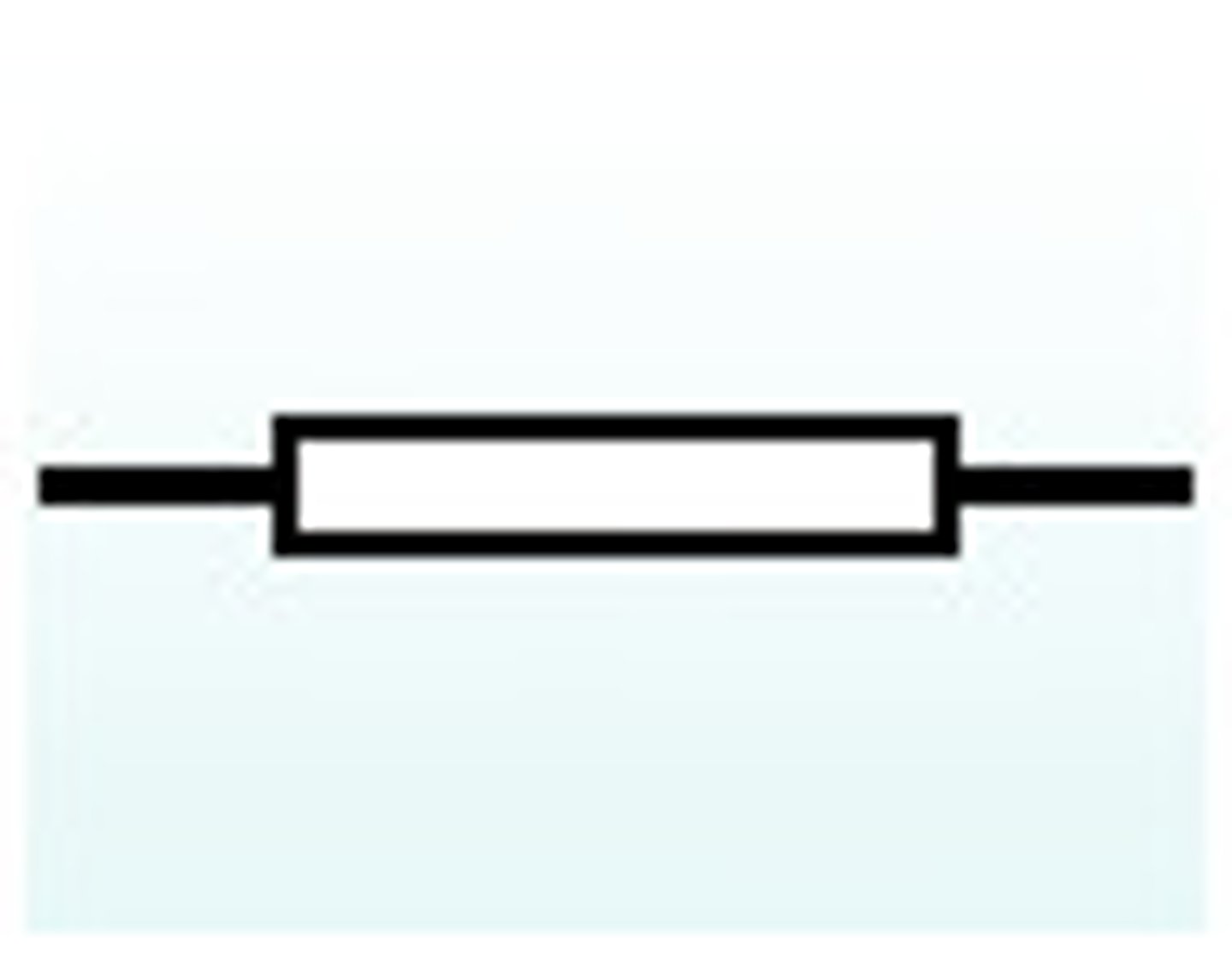
What does a variable resistor look like?
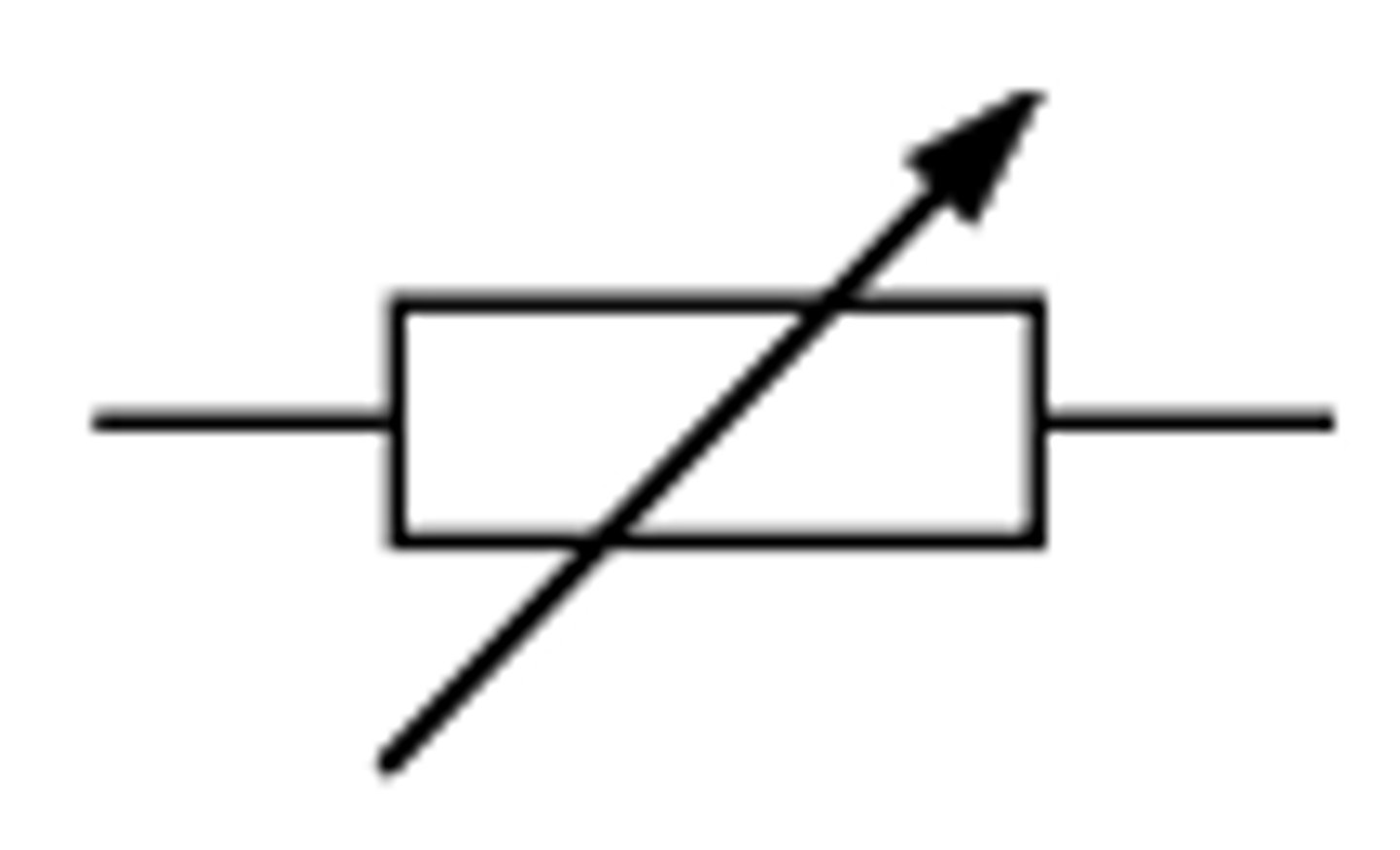
What does a LED look like?
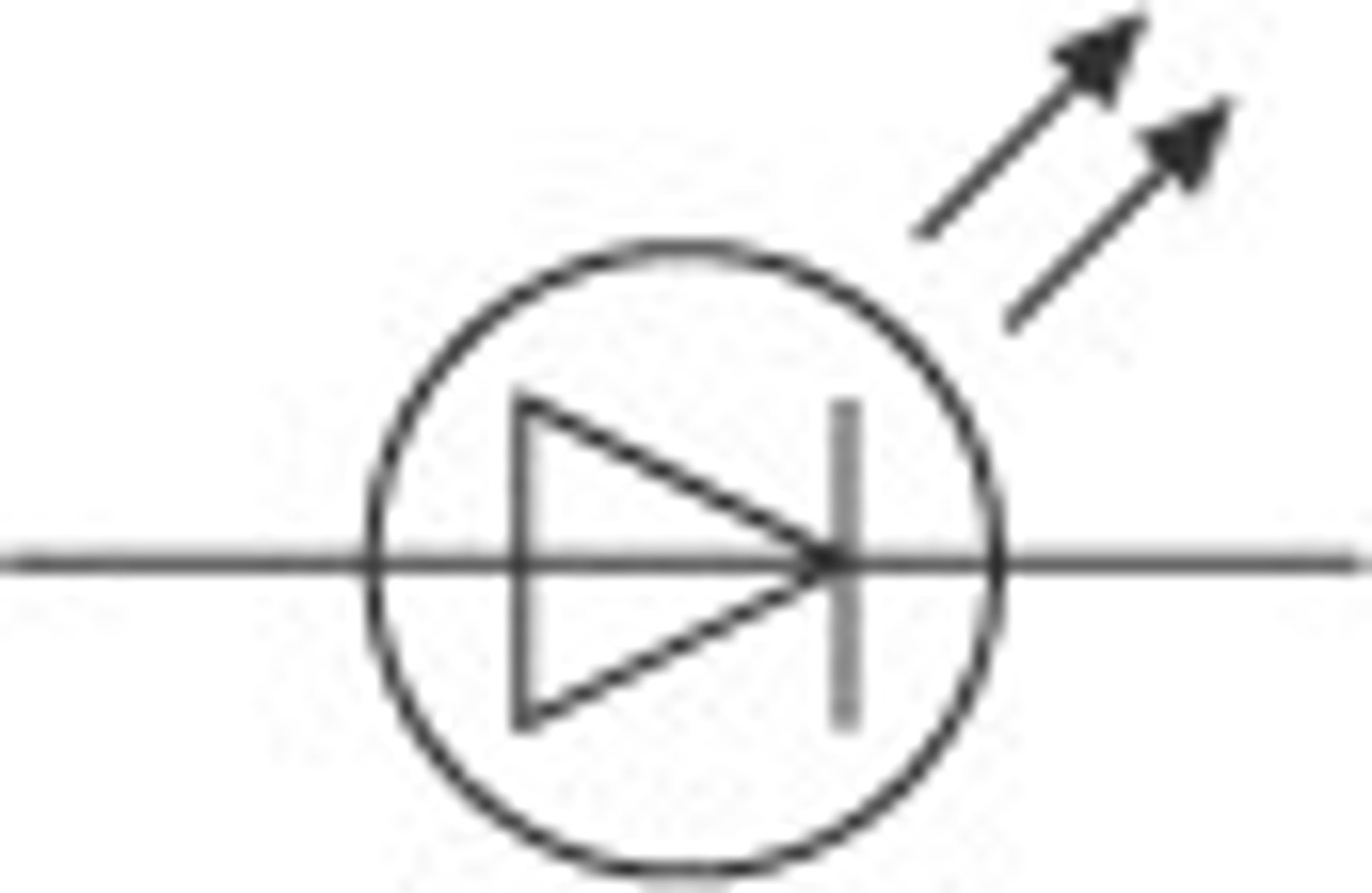
What does a fuse look like?
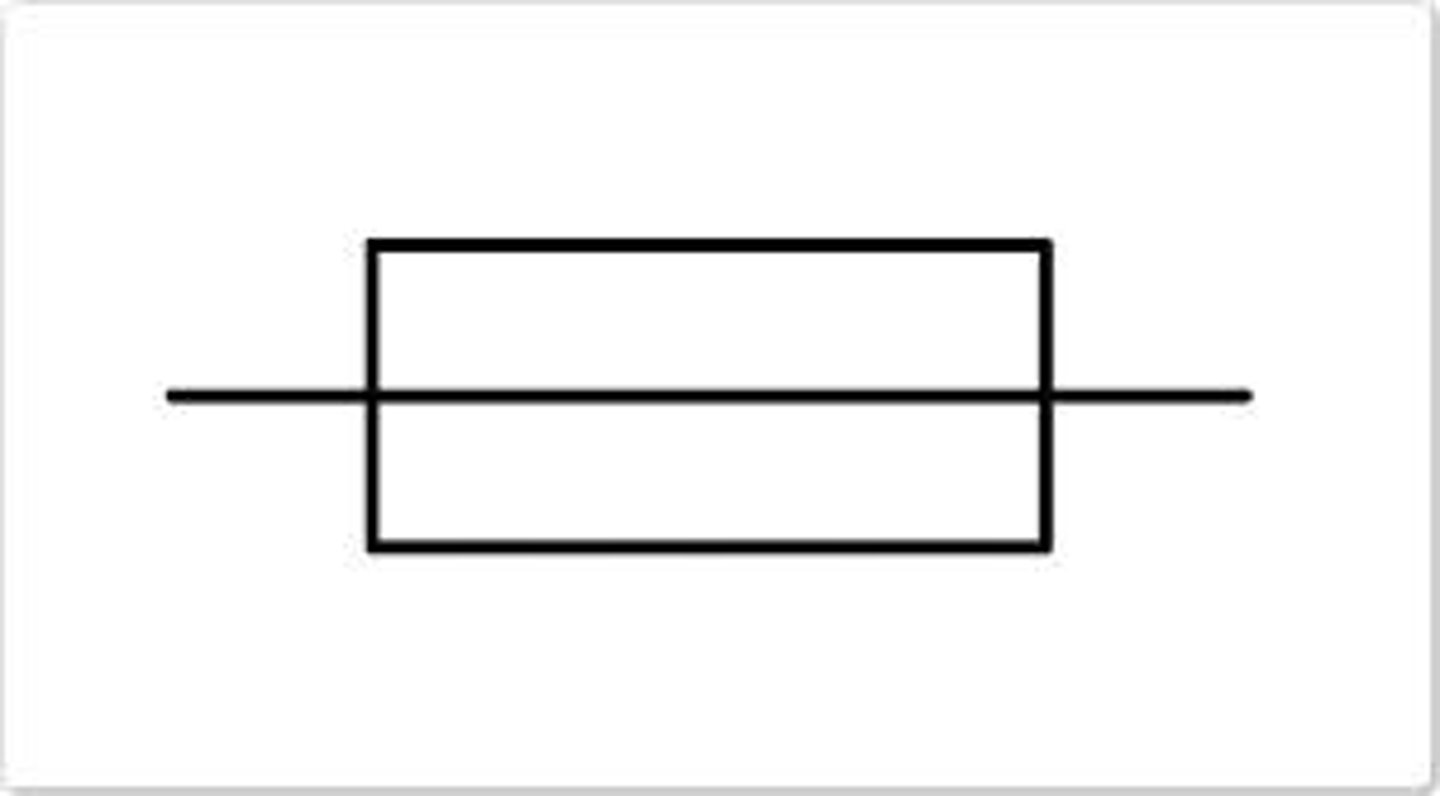
What does a thermistor look like?
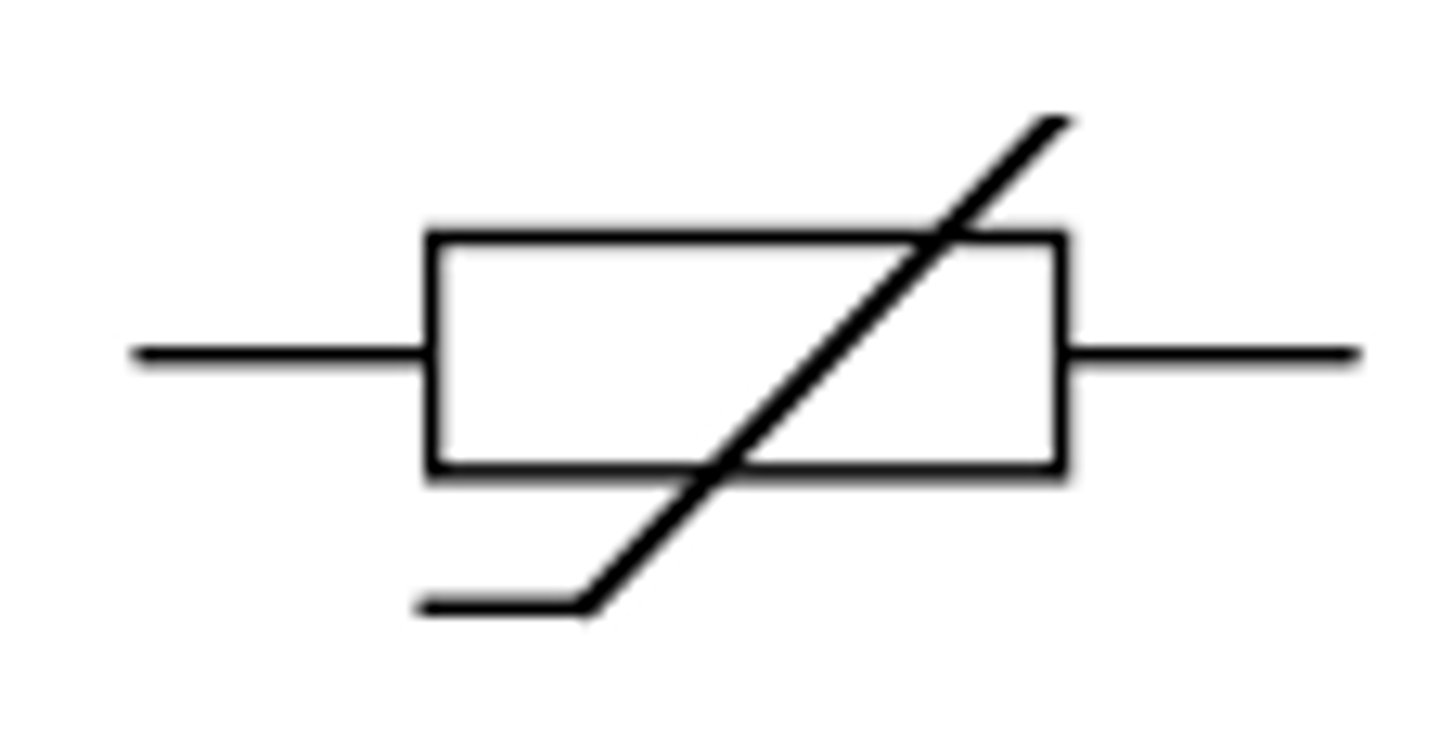
What does a LDR look like?
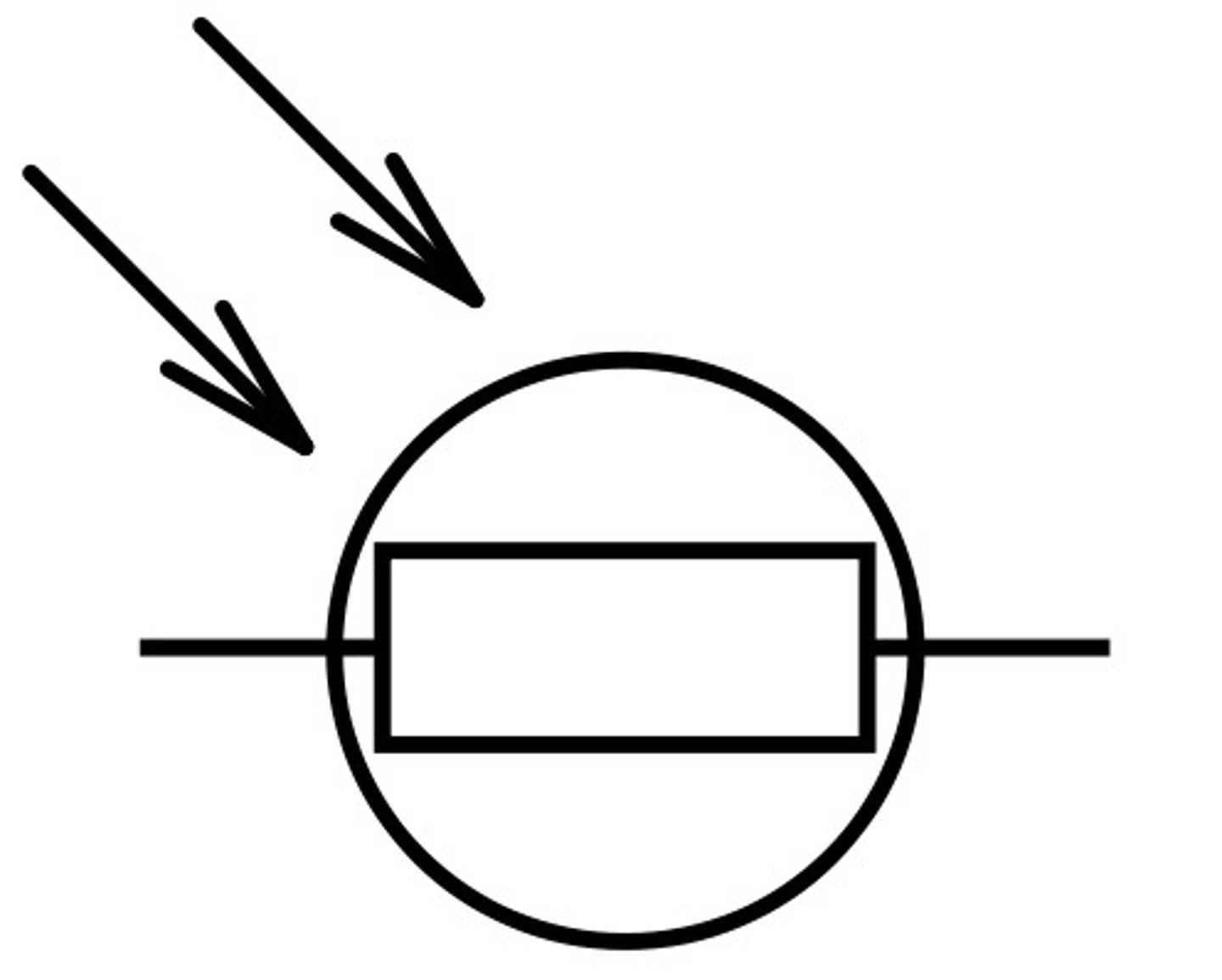
for a circuit to work....
it must have a source of potential difference
How do objects become charged with static electricity?
when certain insulating materials are rubbed against each other, - particles move from one to the other.
How does sparking happen?
electrical charge builds on the object and if the PD is large enough(large PD, strong electric field) , electrons jump across, this is a spark.
What happens to like and opposite charges?
like charges repel, opposites attract
Explain the concept of an electric field?
a charged object creates an electrical field around itself. the electric field is strongest close to the charged object.
What does the electric field of a + and - particle look like
